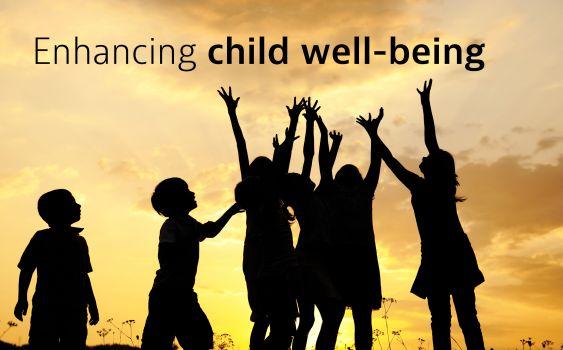Student Wellbeing News

Spotlight: Year 1/2 Community
Focus: CASEA Program
Year 1/2’s have been busy learning about how to manage all their different emotions. We are now about to identify the characteristics of a person who is experiencing different emotions. We have been practicing different ways that we can self-regulate including friendly massages and quiet music time. Our feelings volcano has also been something that we have been using to identify our emotions. Lastly, to help us handle tricky situations we have been using the ‘Stop, Think and Do’ strategy which helps us make sure we choose the right actions.
Topic: Eight tips for parents to support their child's wellbeing.
1. Be aware. Pay attention to children’s reactions and behaviors (such as acting out, depression, aggression, procrastination, arrogance, or introversion). Parents who are attuned to their children and aware of what they’re up to—and with whom—are better positioned to help them respond to challenges and any emotional upheavals.
2. Identify causes. Help kids recognize the causes that underlie the feelings they’re experiencing. (For example, fear, guilt, joy, embarrassment, jealousy, confusion, disgust, grief, hope, frustration…) Encourage them to name and to acknowledge those feelings in order to gain self-awareness. They may want to choose the time or place. Some children have trouble putting feelings into words, so be prepared to help them with that. Stories can be good catalysts, and drawing or keeping a journal can also be beneficial.
3. Communicate. Talking about emotions with others can be an effective way to deal with them. So be available to chat with kids. Listen carefully to what they have to say. Offer comfort. Rephrase what they tell you so you can be sure you’re on the same wavelength. Share your own experiences (within reason) with feelings like shame, sadness, or disappointment, including how you managed them. Be patient. Don’t rush, or attempt to diminish children’s concerns, or gloss over them. Sometimes children’s venting, crying, silence, or quarreling represent their first steps toward coming to terms with their emotions. Give them the time and space they need to put their feelings in perspective, and to then learn to regulate them.
4. Value self-reflection. Model and reiterate the benefits of thinking things through. For example, you might choose to think about how or why certain circumstances or events are unfolding as they are, ways in which similar situations might be handled in the future, and the potential impact of different sorts of behaviors (such as antagonism or withdrawal), or attitudes (such as anger, happiness or worry). Children may need relaxation, unstructured play, fewer demands, music, or alone time in order to calm down, get a handle on what they’re feeling and consolidate their thoughts.
5. Encourage resilience. Help children develop the ability to deal effectively—and creatively—with setbacks, and also with changes and transition times. Sometimes kids have trouble accepting their limitations. Other times situations may become rocky, and the resultant feelings (such as nervousness, excitement, or doubt), can be intense, or hard to manage. Children may require extra support to know that it’s okay to have these feelings, and that they can be reconciled.
6. Foster relationships. Good relationships can be buoyant, whereas difficult ones can be upsetting. Because relationships with family and friends affect the way we feel, it’s important to encourage children to forge solid connections, to learn about give-and-take and conflict resolution, and to develop and use strategies that will keep interactions on an even keel. Friendships can also be very supportive. However, relationship-building involves social skills. Parents can help children hone these skills by ensuring they have ample opportunities for active play, sharing, appreciation of diversity, consistent routines, collaboration, role-playing, and lots of peer and family connectivity.
7. Consider self-esteem. Children often face uncertainties, have to cope with competitive environments or situations, or meet difficult expectations. Many kids struggle with confidence. Help them believe in themselves. Their self-regard is based on many factors—and these factors may be internal, external, big, small, anticipated, unforeseen, and so on. Reinforcement and encouragement from parents can go a long way toward strengthening children’s self-esteem, and instilling feelings such as optimism and relief.
8. Remember the givens. There are certain non-negotiables that fortify children’s emotional development and sustain their well-being. For example, safety. Unconditional love. Sensible, fair guidance. Connectivity. Honesty. Understanding of and respect for their feelings.
It’s important that children receive the right kinds of supports at home, school, and within their communities in order to foster their experiential strengths and emotional literacy. When children’s emotional development is nurtured and reinforced, they’re more likely to feel good about themselves. And, those positive feelings are enabling, so kids can focus more fully on learning, interacting, creating, and succeeding. Helping children build upon their essential emotional capacities will enrich their lives and empower them—motivating them now, and into the future.
Haylea Anderson
Student Wellbeing Leader


